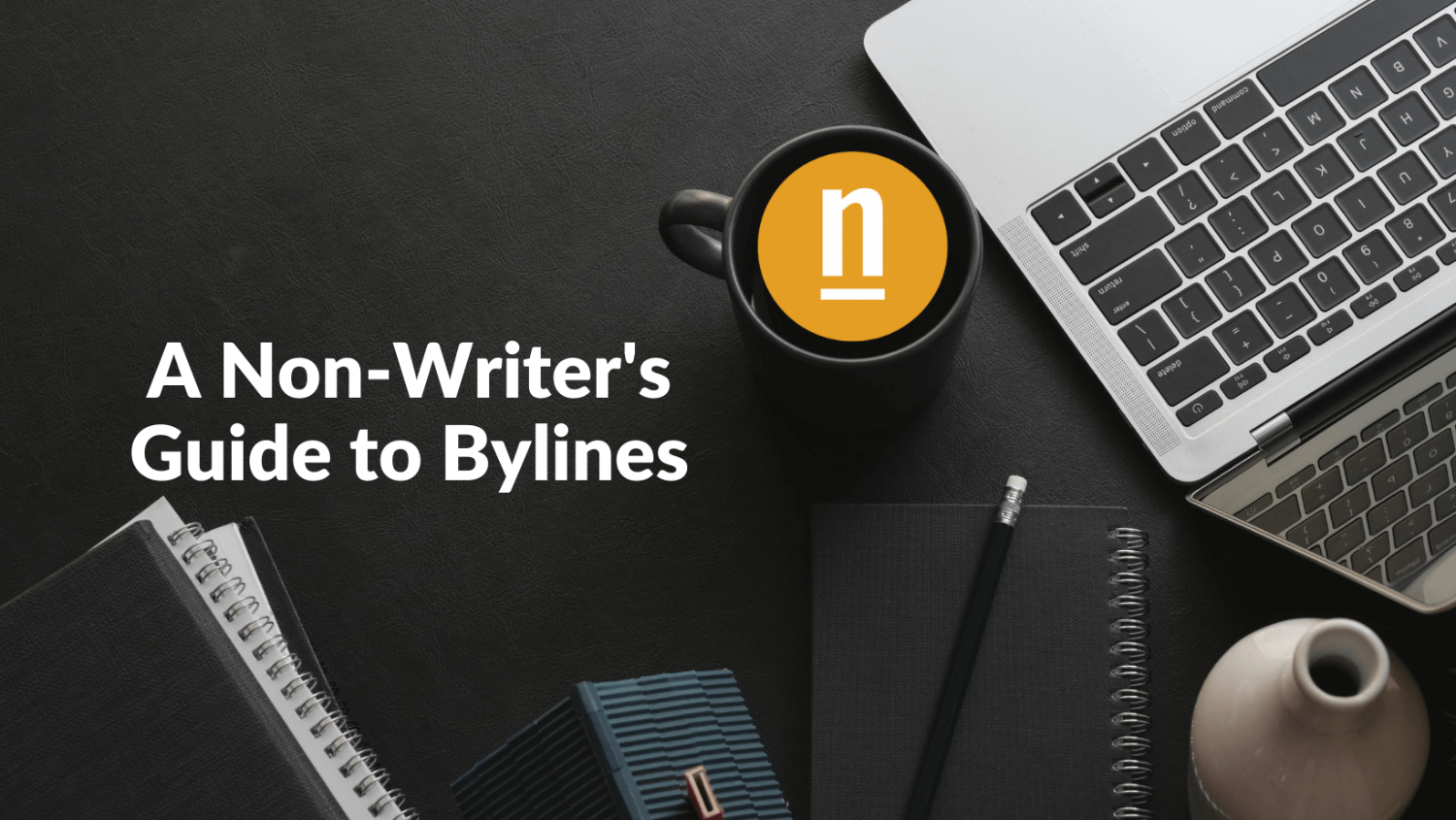Those new to the writing world (or who don’t write at all – but know “about” writing) hear terms like byline, biography, portfolio, and the like. While these are common to seasoned professionals, that isn’t the case for writers new to the industry. This guide to bylines discusses what they are, their benefits, how to build them, and how byline writing differs from ghostwriting.
Understanding Bylines
We’ve all heard it at one point in our career or another – a writer in our network landed a byline they’ve wanted for ages. But what does that mean? This guide to bylines explains:
What are they?
Bylines are short phrases introducing the article’s author for a specific article, blog post, or other publication. That way, readers can identify the name of the person writing what they’re reading. You’ll typically find bylines underneath the content’s title or in a short author blurb at the end of the piece.
Why are they beneficial?
Bylines are beneficial to writers in that they help them develop a professional portfolio and branding. Additional benefits include:
- Establishing credibility: As far as branding and niching down go, a writer’s byline helps freelancers establish credibility in their area of expertise and target audience.
- Establishing a platform: If writers are enthusiastic about a topic, bylines give them a sounding board to speak from when developing their platform.
- Fostering connections for future engagements: Bylines allow writers to develop engagements with brands, clients, publications, and websites for future engagement.
How to Build Up Bylines
Every writer has to start somewhere, and if you don’t have bylines, you might feel like you aren’t getting anywhere. While it’s challenging to secure work or get pitches accepted without bylines, it isn’t impossible. Let’s look at two strategies for building your bylines:
Blogging
Years ago, it seemed like everyone was jumping on the “blogging bandwagon.” We can still find countless blogs about every topic, but writers might relegate themselves to long-form social media posting instead. However, if you’re trying to create a list of bylines, those posts might not be as valuable as you think. They’re great for attracting your target audience, but they don’t give you a solid writing clip to which you can refer.
Here are three blogging strategies to consider instead of or alongside your social media efforts:
- Start a blog on your business website: If you have a website, keep it up-to-date with content highlighting your strengths, expertise, and niche topics.
- Guest posting: Break into a niche or industry by guest posting on a blog that’s willing to give you a byline. Choose high-traffic and reputable sites to position yourself as a thought leader.
- Medium: You have options on Medium – you can publish on your account, start a publication, contribute to an existing publication, or any combination of these options.
Networking
Networking is a buzzword we hear throughout the writing and content marketing world. We all know it’s crucial to develop a social presence when branding ourselves in a niche. But did you know this is also an excellent way to connect with other writers and learn about:
- where to find writing gigs
- who is looking for article pitches
- which sites or publications are actively seeking contributors
Bylines vs. Ghostwriting
This guide to bylines isn’t complete without a brief discussion of ghostwriting. Some writers refuse to ghostwrite, some make a living off doing it, and others do a combination of the two. No matter which direction you decide to go, it’s essential to understand what ghostwriting is and why it’s beneficial.
What is ghostwriting?
Brands and publications hire ghostwriters to create content without receiving credit for that work. They might write under the name of another brand, company, group, individual, or institution. Ghostwriters work on everything a bylined writer would and more. Here are six examples:
- Blogs on behalf of a company CEO or other public figure
- Case studies
- eBook or print publications
- Email and social media copy
- Landing pages and other web copy
- Whitepapers
Why is ghostwriting beneficial?
Even though you don’t receive a byline, there are benefits to becoming a ghostwriter. Companies that don’t have the chops to produce high-quality content turn to ghostwriters to fill that gap. Here are four benefits companies can reap from collaborating with ghostwriters:
- Pitches: If you’re running short on ideas, you can ask ghostwriters to submit pitches – and then you can hand-pick which ideas you like the best.
- Professionalism: You’re collaborating with elite writers who understand or have expertise in your industry, follow guidelines, and write using your voice and tone.
- SEO: Include search engine optimization strategies in your guidelines for ghostwriters to follow.
- Time constraints: It takes time to manage customers or clients, oversee employees, follow up on leads, and the like – collaborating with ghostwriters means companies don’t have to worry about producing content on top of everything else.
Guide to Bylines FAQs
What is a byline in an article?
A byline in an article is a short line featuring the writer’s name that gives them credit for the work in a publication or website.
What do you write in a byline?
You might see publications and websites giving writers space for a brief biography below their byline. That’s where they can include contact information, a blurb about their background, a link to additional content available on the site, and a link to their business website.
